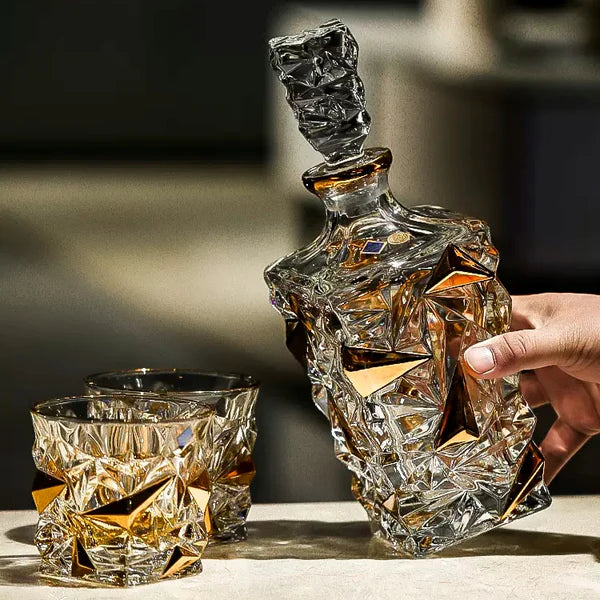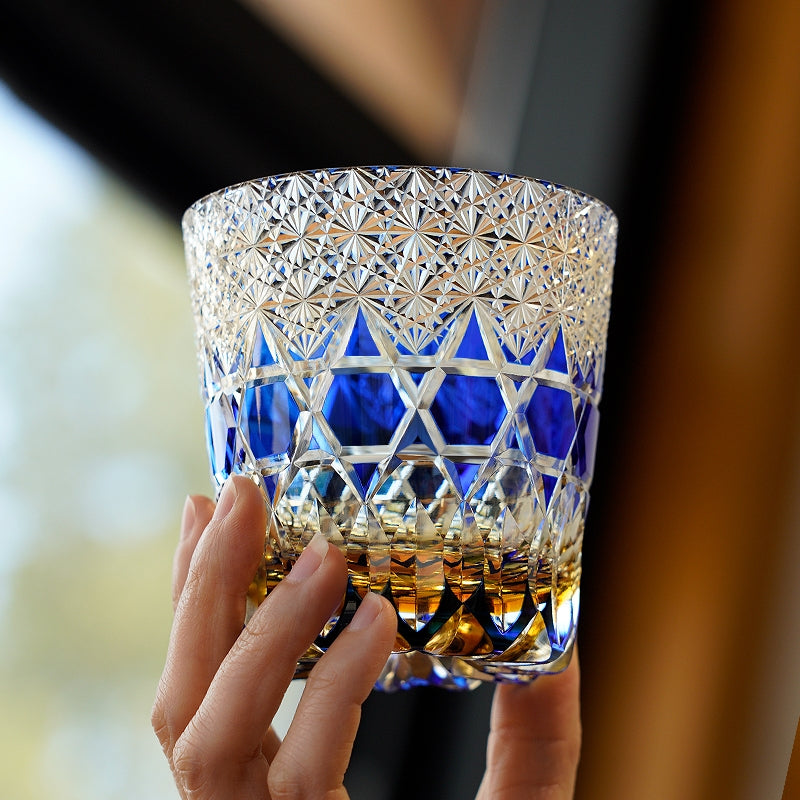
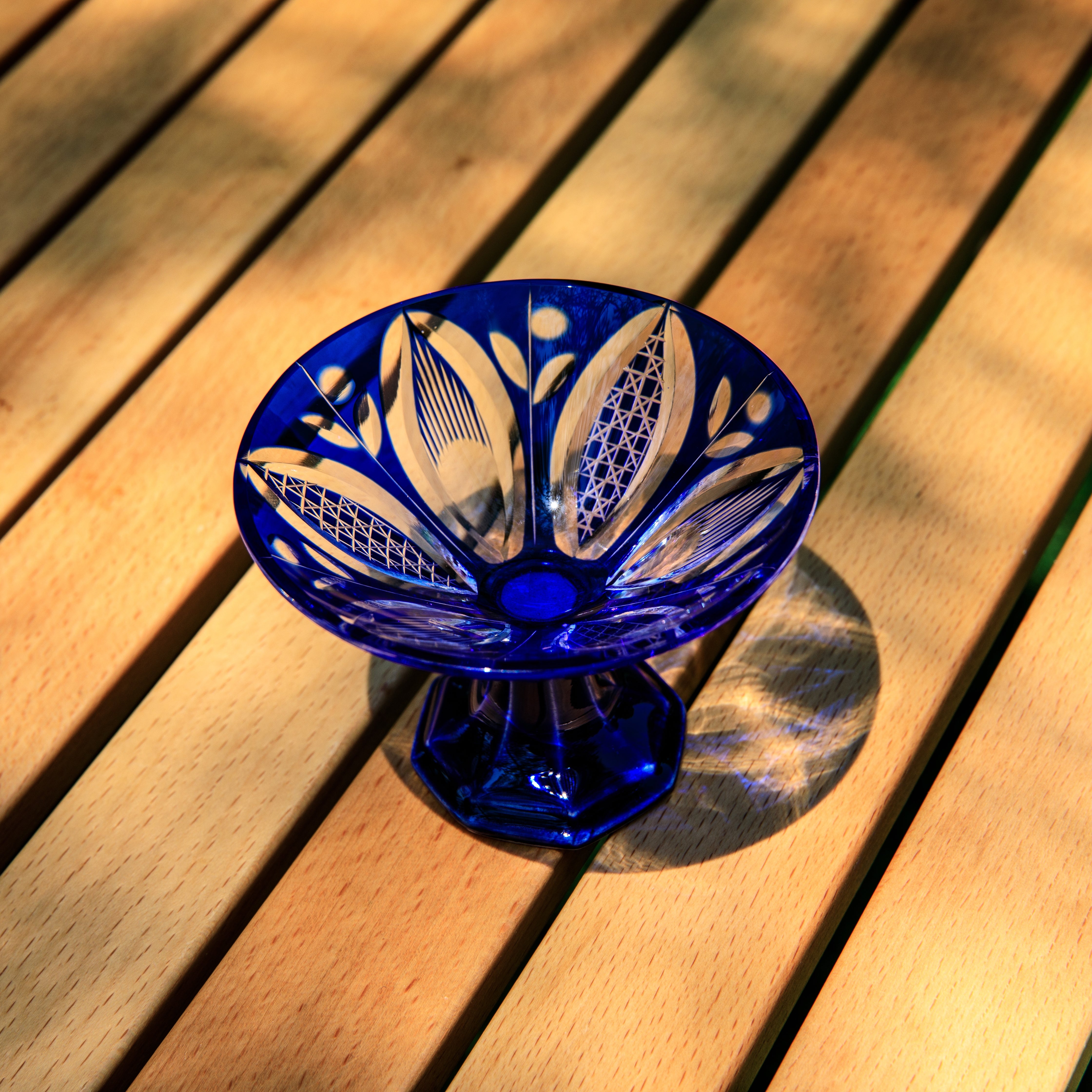



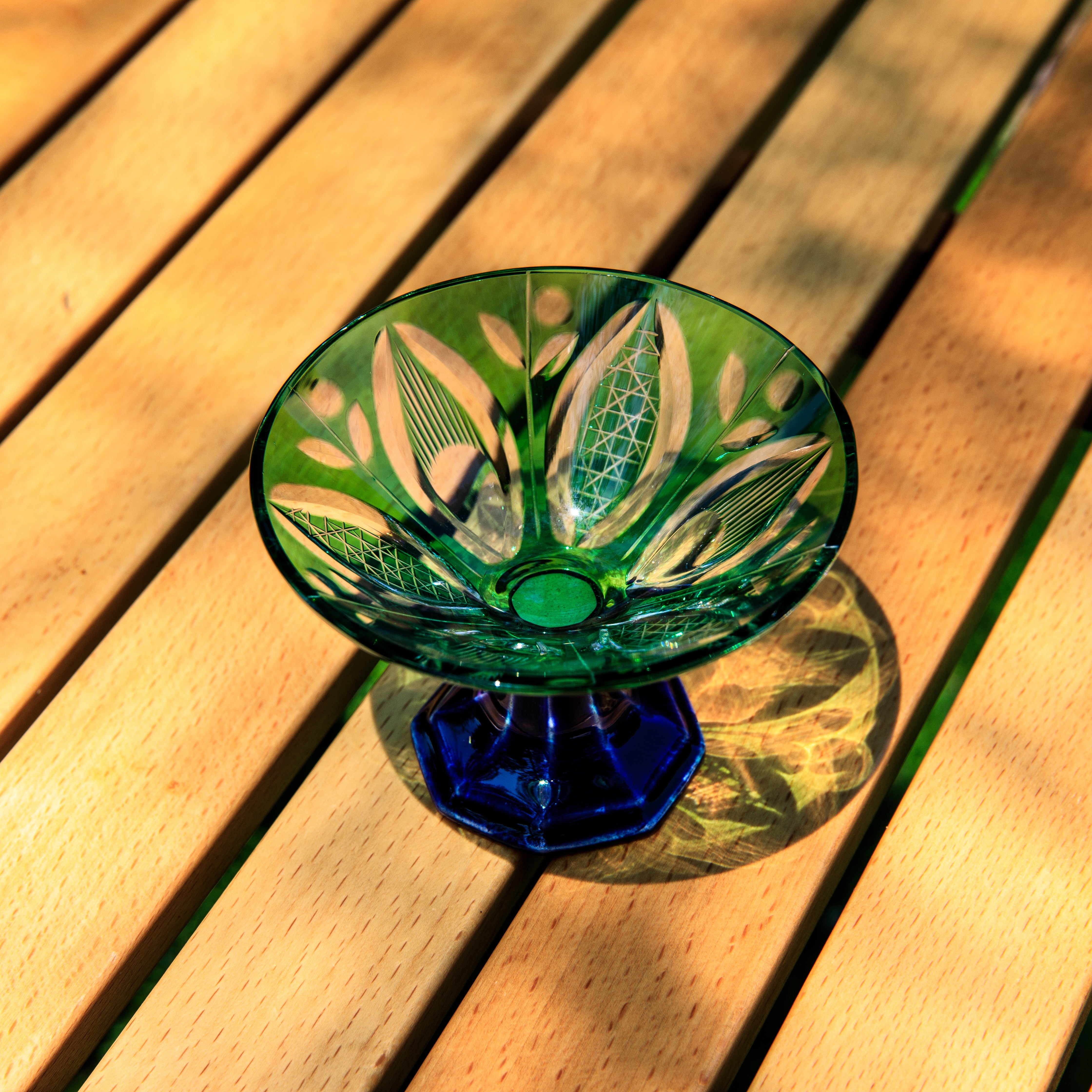
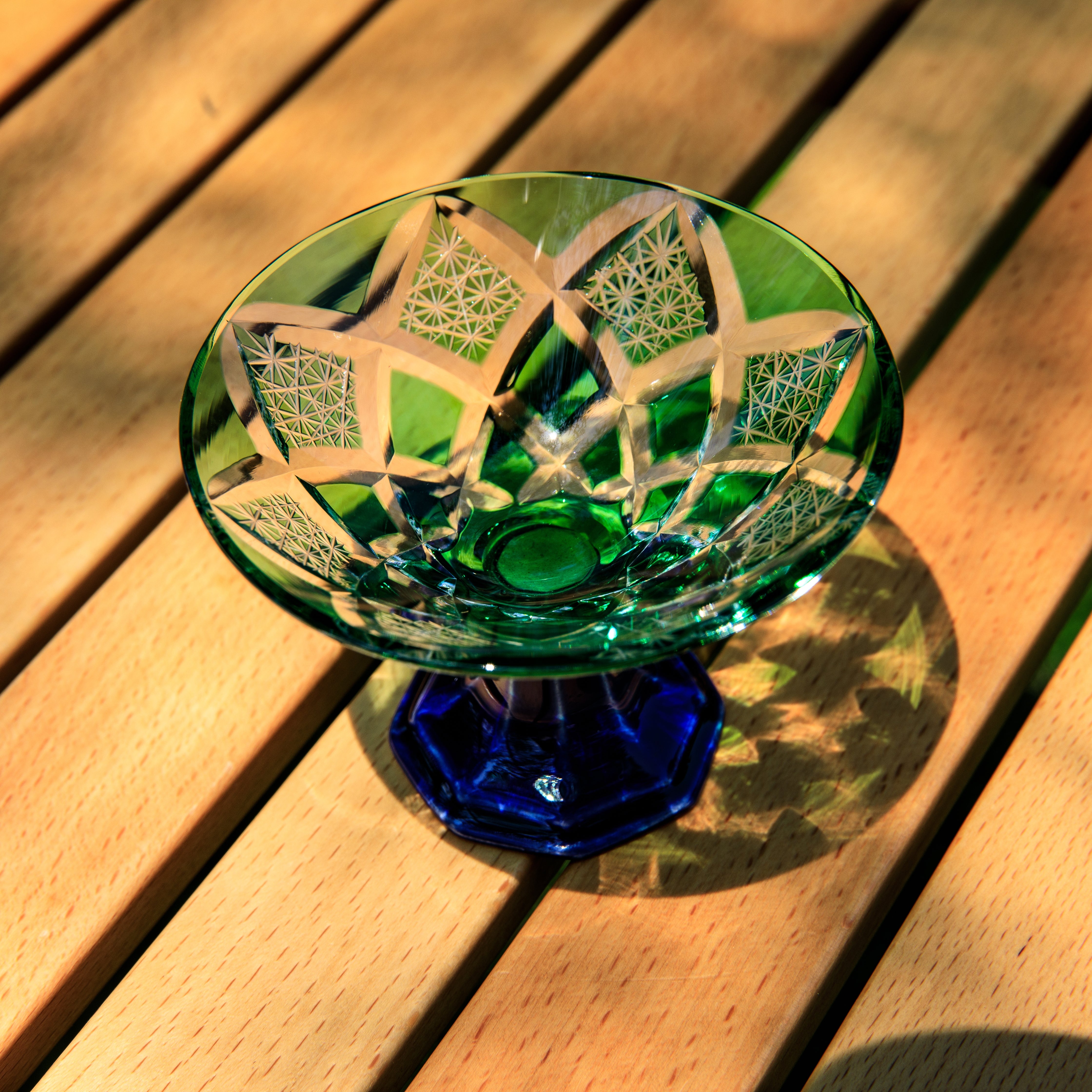


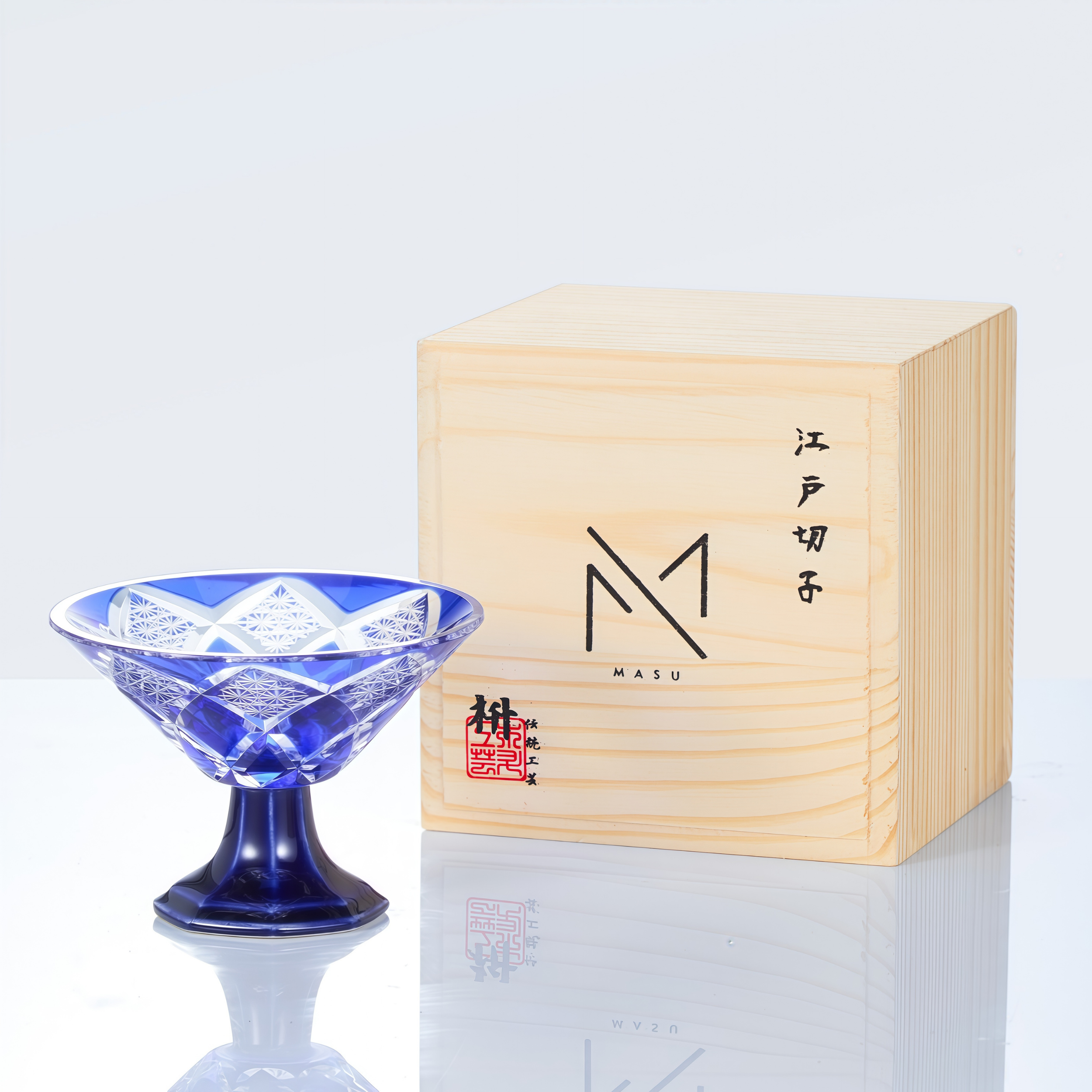
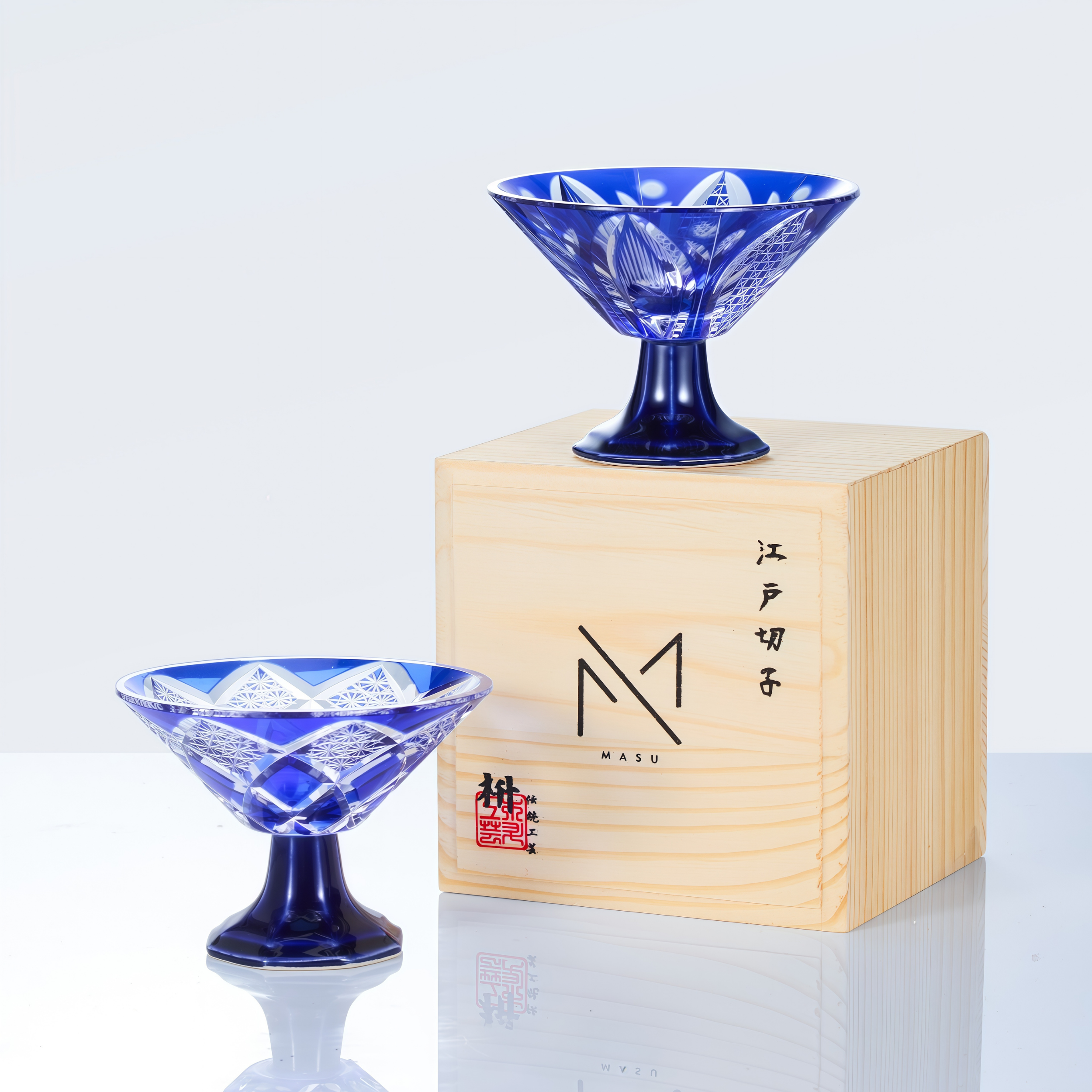

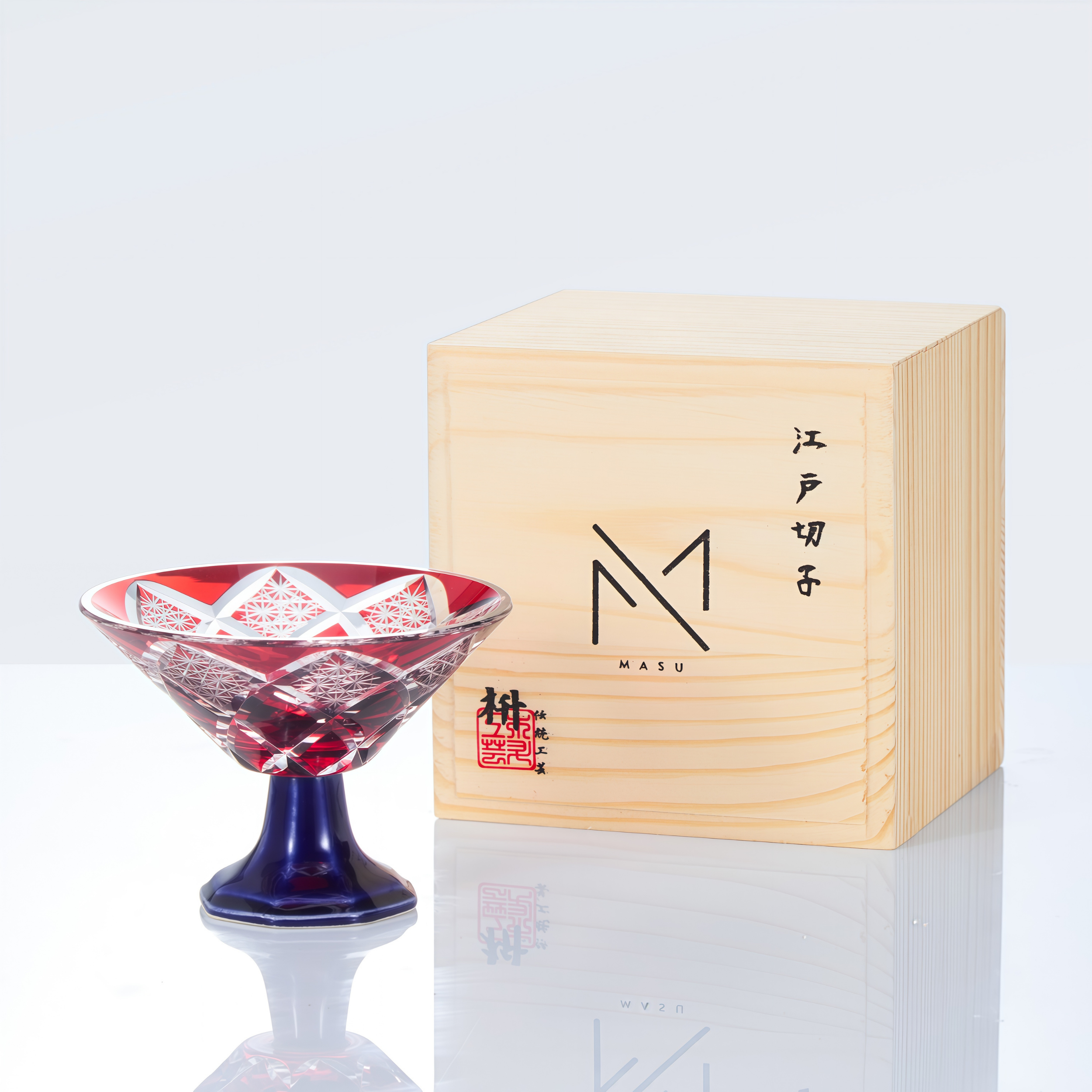
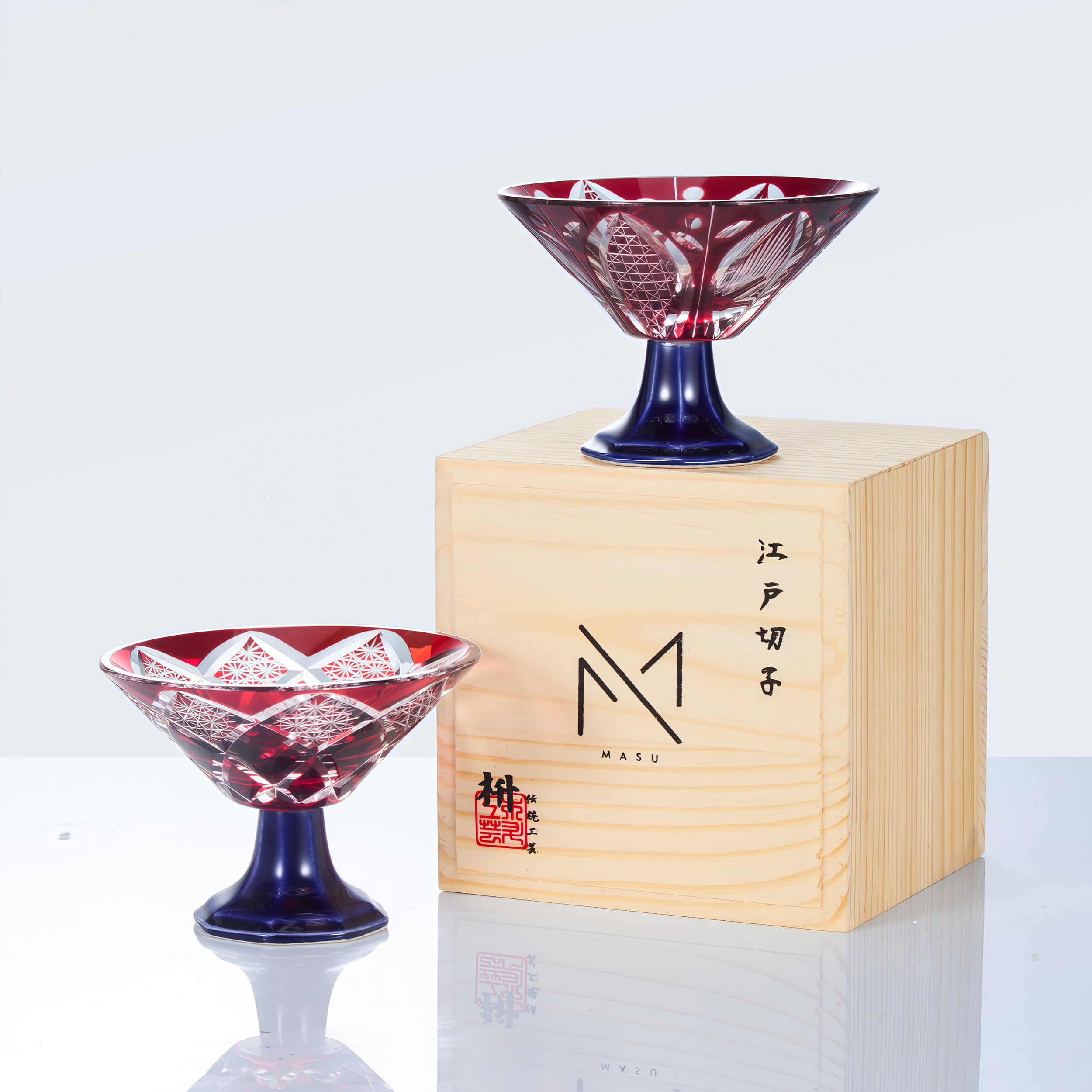
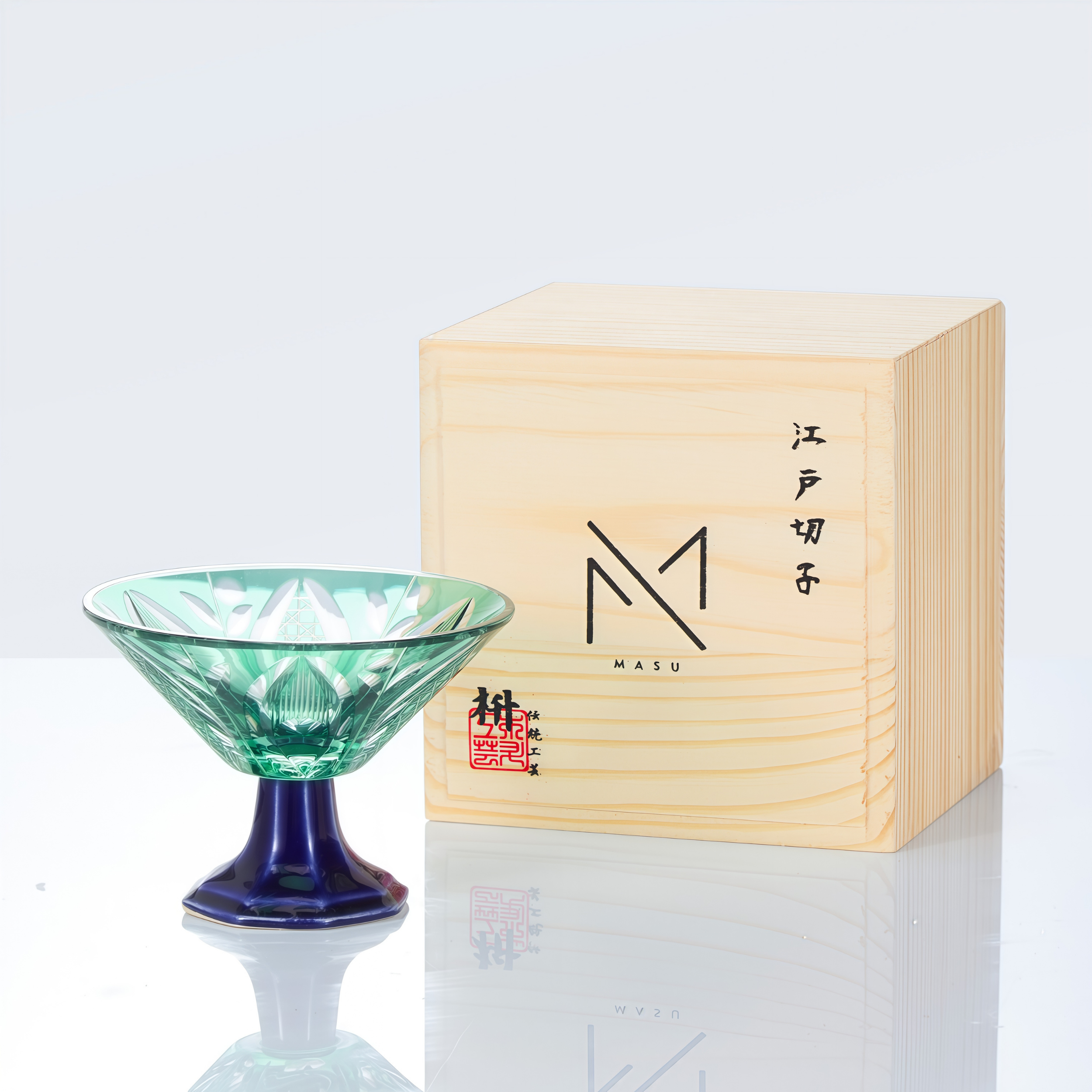
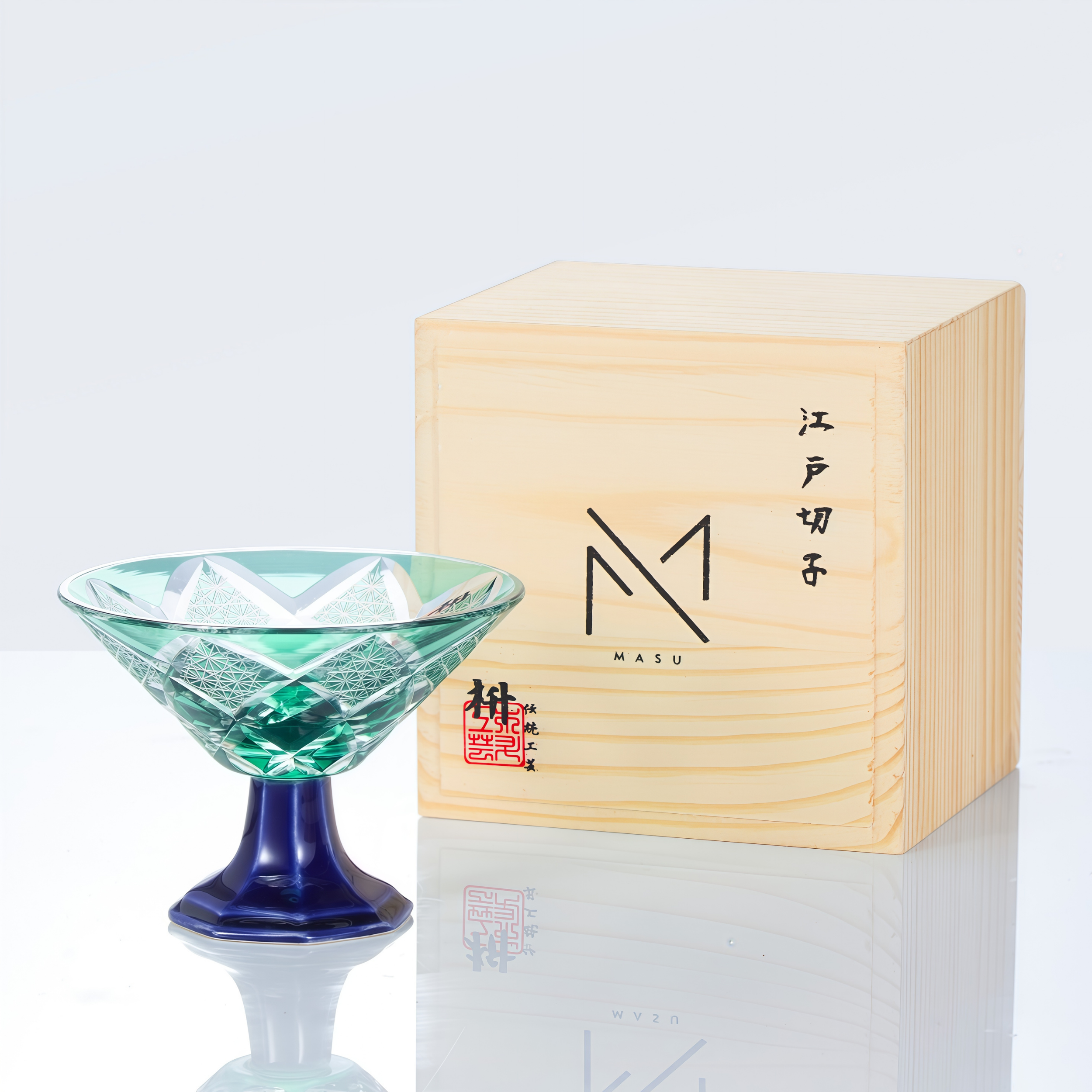
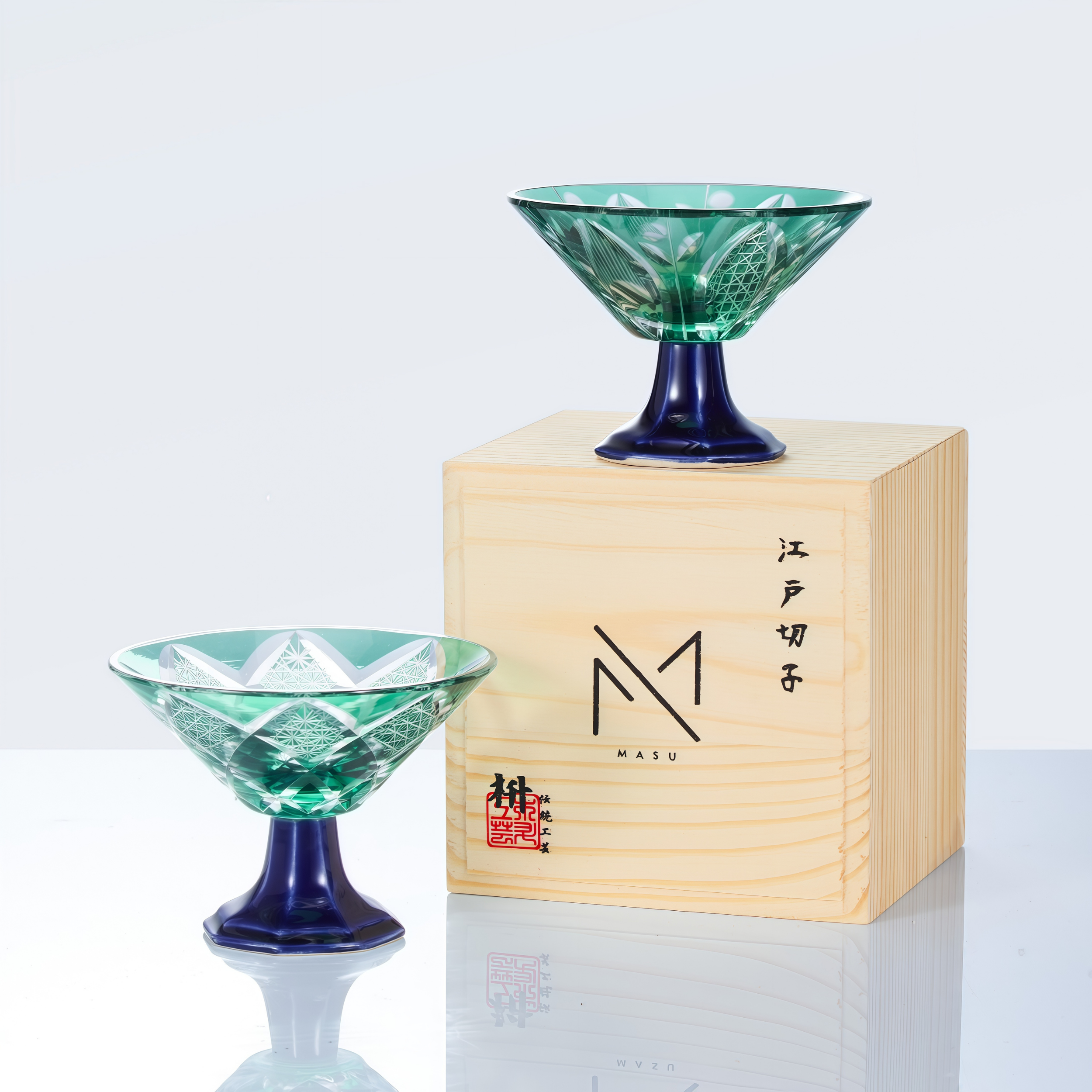
Edo Kiriko Handcrafted Karyu Sake Glass Collection
The Karyu Sake Glass Collection combines the refined elegance of traditional Edo Kiriko with a contemporary silhouette designed to enhance aroma and presentation. With its broad, open rim, each glass is ideal for refined sake pours, allowing the fragrance to bloom while offering a visually captivating drinking experience. The tall indigo pedestal adds grace and lift, giving the glass a poised, airy presence.
Each piece showcases one of two distinctive cut styles that bring depth and vibrancy: Hana-kiri (花切り), a radiating floral crest motif that unfurls like petals, and Yarai-koshi (矢来格子), a diamond lattice pattern inspired by interwoven bamboo fencing. These cuts are brought to life in vivid color overlays: Ruri (lapis blue), Aka (vermilion red), and Midori (emerald green), each catching and refracting light with stunning clarity.
Perfect for celebratory pours, curated pairings, or elegant gifting, the Karyū Collection invites you to experience sake with beauty and intention.
• Craft: Edo Kiriko
• Product:
1x Glass
1x Wooden Box
Materials
Specifications
Product Care
Shipping
Times
Orders take 2-3 business days to process after placing the order before shipping out.
Standard Shipping Times
• North America
United States (Mainland): 5 - 12 days
Alaska, Hawaii, and other US regions: 10 - 20 days
Canada: 5 - 14 days
Mexico: 10 - 17 days
• Europe: 5 - 12 days
• Australia/New Zealand: 6 - 14 days
• Asia
Southeast Asia: 5 - 8 days
Other Regions: 5 - 14 days
• Latin America: 10 - 20 days
• Other Countries: 10- 20 days
Express Shipping Times: 4 - 8 days
Available for Selected Products in the Following Countries:
• United States(Mainland)
• United Kingdom
• France
• Germany
• Italy
• Austria
• Spain
• Netherlands
Priority Shipping Times: 3 - 5 days
Available for Selected Products in the Following Countries:
• United States(Mainland)
• Canada
• United Kingdom
• France
• Germany
• Italy
• Austria
• Spain
• Netherlands
• Australia
• New Zealand
• United Arab Emirates
• Saudi Arabia
Return, Refund & Exchanges
We offer a 7-day return & exchange policy. For detailed information Return, Refund & Exchanges
Choose options


















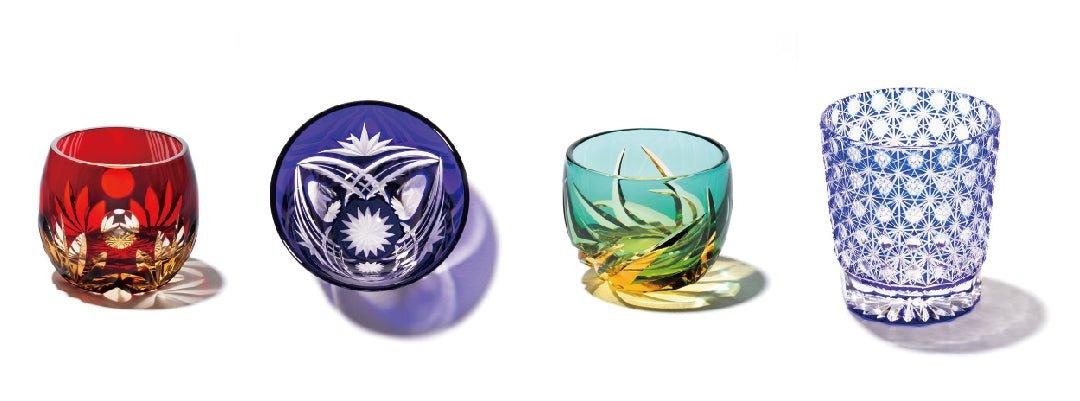
Crafting Of Edo Kiriko
Design
The artist marks simple grid lines on the glass without drawing a design to provide the plan's framework. The design grid is drawn on the glass's surface using a bamboo stick or brush with red iron oxide. Next, the baselines of the design are lightly etched using a whetstone. Relying on these fine marks and lines, the delicate patterns of Edo kiriko are created with the artisan's expertise and skills.

First cuts
The base design is cut to about three-quarters of the final width and depth. The surface of the glass is cut using a sand paste-coated metal disc rotating at high speed. Generally, emery powder with many abrasive particles is used to create the sand paste. The clear pattern border lines and the irregular patterns are cut little by little. The balance between the thickness and depth of the cut lines relies upon the artisan's years of experience, as there are no detailed sketches.
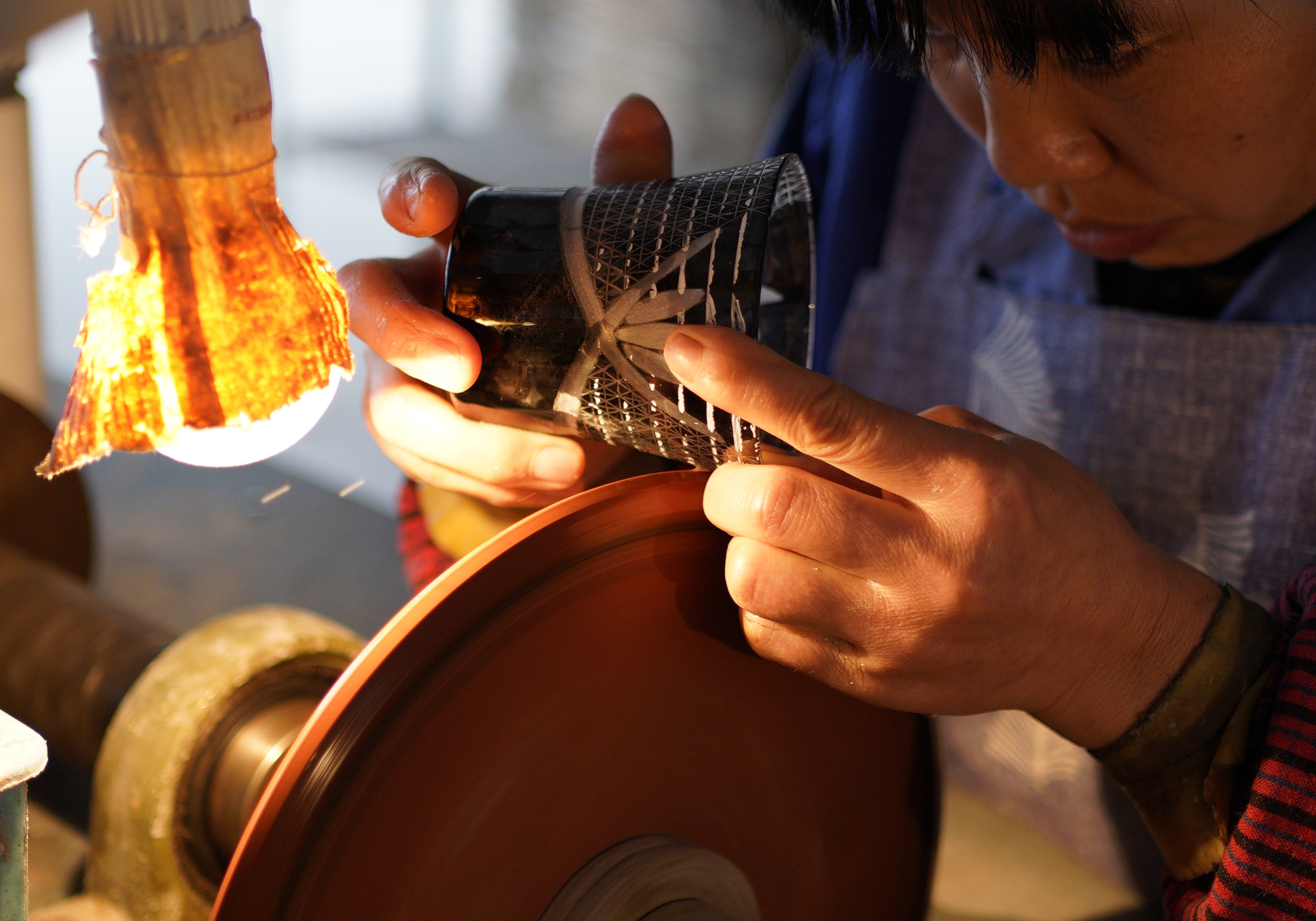
Adjustments
The patterns cut in the second stage are adjusted, and the surface is smoothly polished in this process. A whetstone disc, natural or artificial, is used to cut delicate patterns which cannot be created with the metal disc used in the prior process. This is the last cutting stage to complete the designs, so careful work is required not to leave any powder residue and to ensure a brilliant finish.
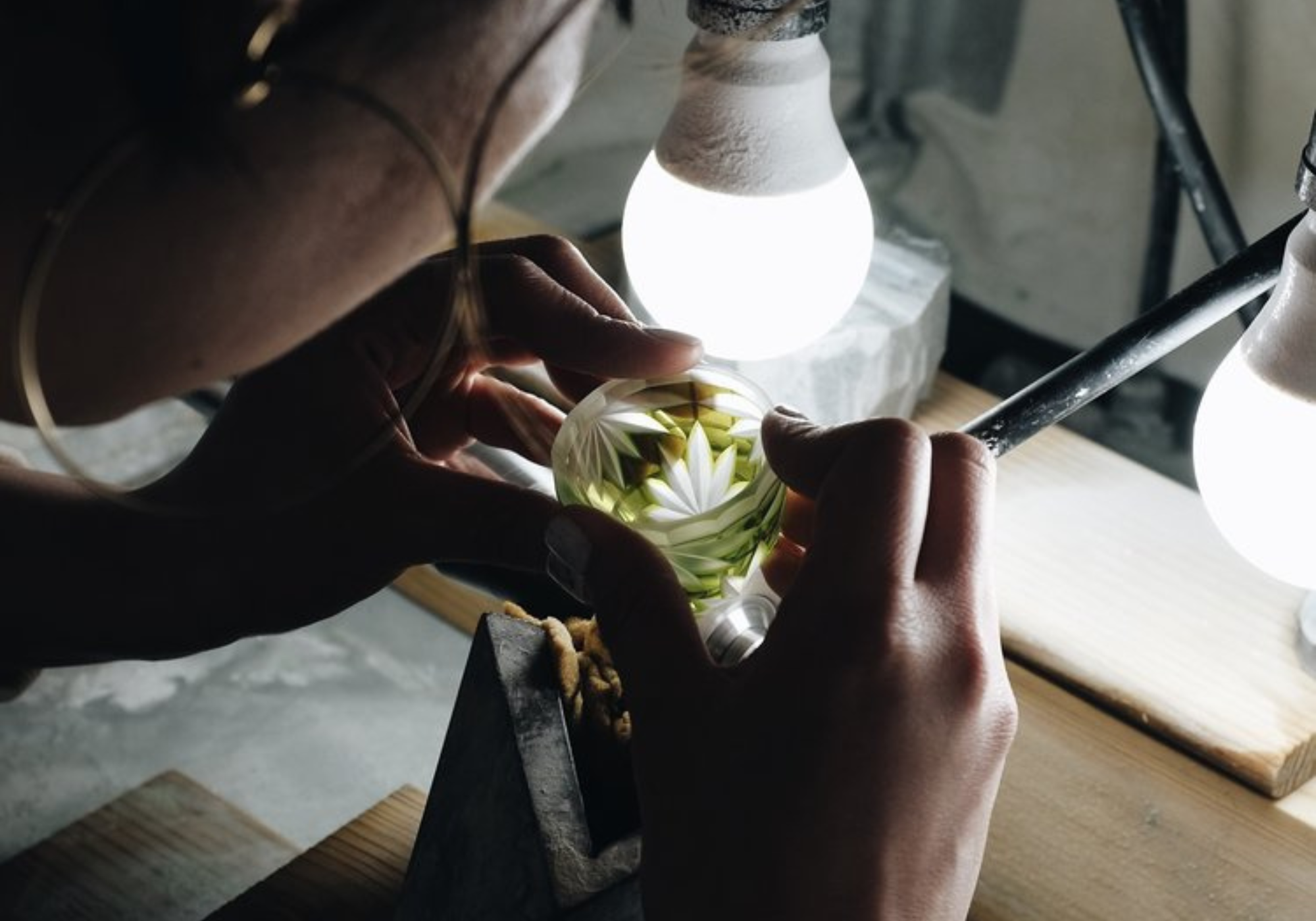
Polishing
This is the final stage of production, and it is usually carried out on soda-lime glass (most prevalent type of glass). The opaque surface left by the third stage is returned once more to its original transparent state, with the attractive shine and sparkle typical of Edo kiriko. Chemical processing with hydrofluoric acid is also applied for high-class crystal glass. Depending on the piece, a variety of different polishing discs are used, such as paulownia wood discs, willow wood discs, hair brush discs, and belt discs. The final work is polished by applying water and polishing powders to obtain a glittering finish, while fine sections are polished with a cloth or a brush. To complete the final polishing, a cloth buffing disc is used to bring out the sparkle and shine of the cut glass.

